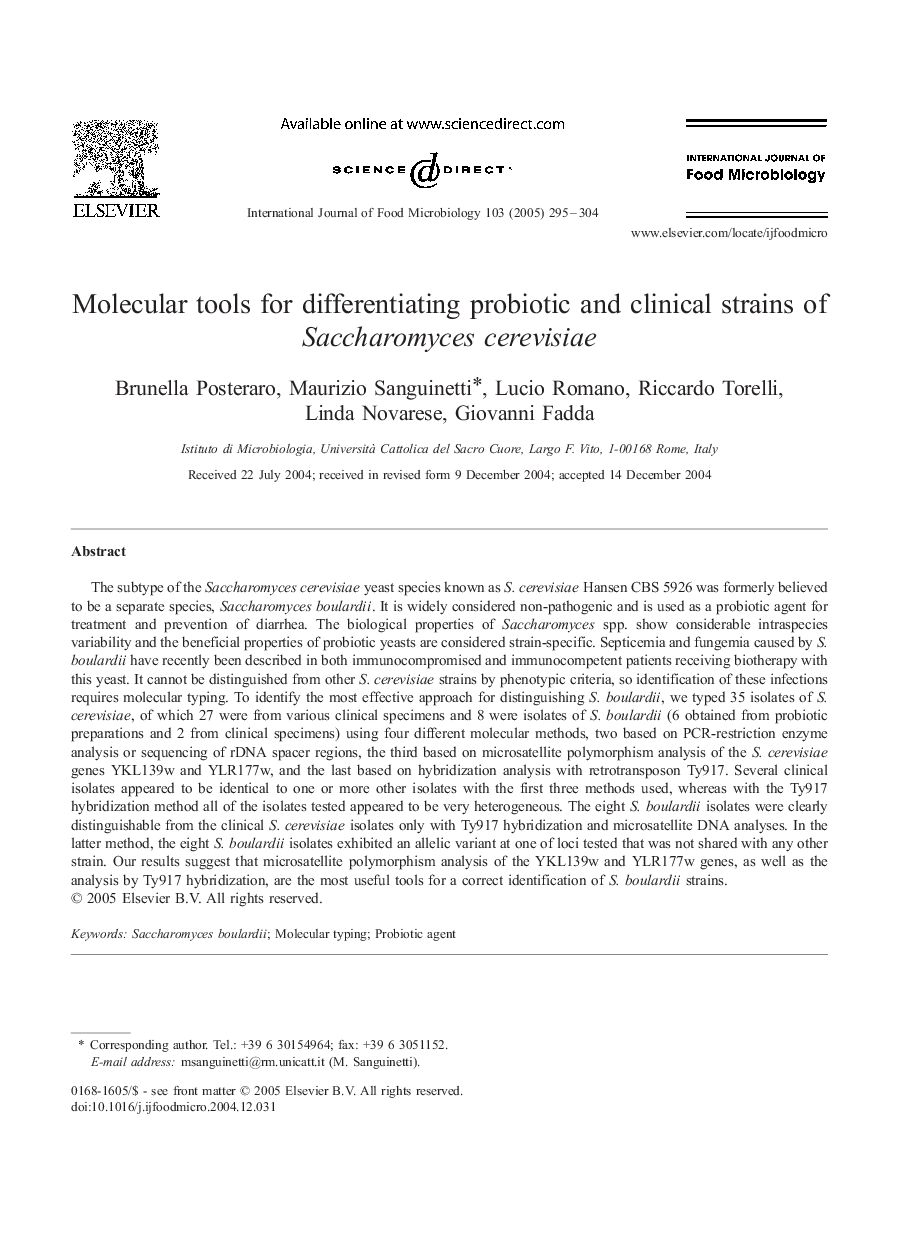| کد مقاله | کد نشریه | سال انتشار | مقاله انگلیسی | نسخه تمام متن |
|---|---|---|---|---|
| 10107300 | 1616784 | 2005 | 10 صفحه PDF | دانلود رایگان |
عنوان انگلیسی مقاله ISI
Molecular tools for differentiating probiotic and clinical strains of Saccharomyces cerevisiae
دانلود مقاله + سفارش ترجمه
دانلود مقاله ISI انگلیسی
رایگان برای ایرانیان
موضوعات مرتبط
علوم زیستی و بیوفناوری
علوم کشاورزی و بیولوژیک
دانش تغذیه
پیش نمایش صفحه اول مقاله

چکیده انگلیسی
The subtype of the Saccharomyces cerevisiae yeast species known as S. cerevisiae Hansen CBS 5926 was formerly believed to be a separate species, Saccharomyces boulardii. It is widely considered non-pathogenic and is used as a probiotic agent for treatment and prevention of diarrhea. The biological properties of Saccharomyces spp. show considerable intraspecies variability and the beneficial properties of probiotic yeasts are considered strain-specific. Septicemia and fungemia caused by S. boulardii have recently been described in both immunocompromised and immunocompetent patients receiving biotherapy with this yeast. It cannot be distinguished from other S. cerevisiae strains by phenotypic criteria, so identification of these infections requires molecular typing. To identify the most effective approach for distinguishing S. boulardii, we typed 35 isolates of S. cerevisiae, of which 27 were from various clinical specimens and 8 were isolates of S. boulardii (6 obtained from probiotic preparations and 2 from clinical specimens) using four different molecular methods, two based on PCR-restriction enzyme analysis or sequencing of rDNA spacer regions, the third based on microsatellite polymorphism analysis of the S. cerevisiae genes YKL139w and YLR177w, and the last based on hybridization analysis with retrotransposon Ty917. Several clinical isolates appeared to be identical to one or more other isolates with the first three methods used, whereas with the Ty917 hybridization method all of the isolates tested appeared to be very heterogeneous. The eight S. boulardii isolates were clearly distinguishable from the clinical S. cerevisiae isolates only with Ty917 hybridization and microsatellite DNA analyses. In the latter method, the eight S. boulardii isolates exhibited an allelic variant at one of loci tested that was not shared with any other strain. Our results suggest that microsatellite polymorphism analysis of the YKL139w and YLR177w genes, as well as the analysis by Ty917 hybridization, are the most useful tools for a correct identification of S. boulardii strains.
ناشر
Database: Elsevier - ScienceDirect (ساینس دایرکت)
Journal: International Journal of Food Microbiology - Volume 103, Issue 3, 15 September 2005, Pages 295-304
Journal: International Journal of Food Microbiology - Volume 103, Issue 3, 15 September 2005, Pages 295-304
نویسندگان
Brunella Posteraro, Maurizio Sanguinetti, Lucio Romano, Riccardo Torelli, Linda Novarese, Giovanni Fadda,